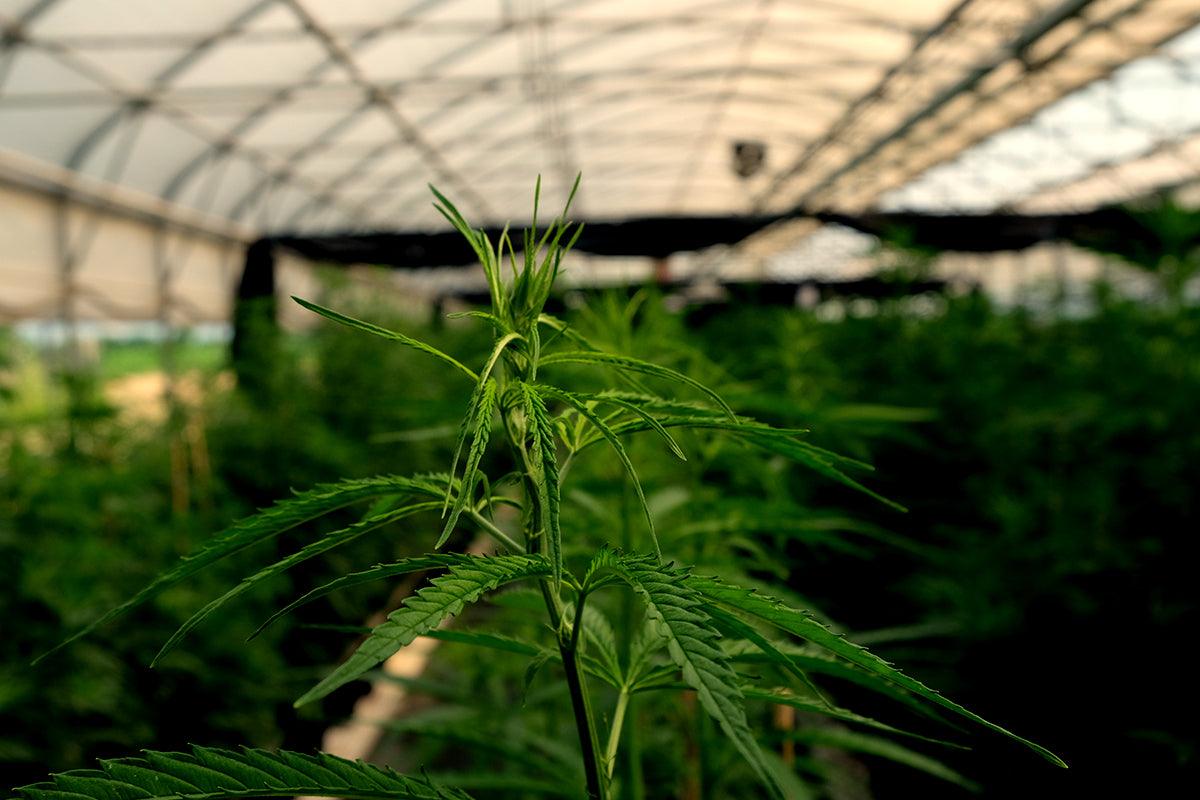What historical relationship exists between Italy and cannabis?
In some rural areas of Italy (very widespread in Emilia Romagna) it is still possible to admire the "maceri" : rectangular waterproofed ashlars of medium-large size, obtained on the edges of the fields once used for the cultivation of hemp varieties. In these "lakes" the hemp was immersed, after the harvest, for maceration.
Following the well-known ban on the cultivation of all types of cannabis in the twentieth century, agriculture had to necessarily adapt and reconvert the crops, but many farmers chose to keep those wastes (giving up, it should be underlined, portions of arable land) as a spectacular reminder of times gone by.
Today it is hard to believe, but until the first decades of the last century the cultivation of hemp in Italy mobilized a huge number of jobs and constituted a large economic spin-off for the country . Indeed: to be precise, until the 1950s, Italy was the second largest producer of hemp in the world (behind the considerable Soviet Union!). An "industrial" hemp production.
The yields per hectare that the Italian soil and climate offered (and could still offer today) had no comparison in any other country dedicated to cannabis cultivation. By at least the 14th century we were producing so much hemp that we could export it all over the world, and one of our most loyal customers was theRoyal Navy of the British sovereigns, no less.
Hemp was cultivated massively and supplied for fiber processing in order to obtain textile fabrics, ropes and other products and basic materials. In particular, a very high quality fiber was obtained from the variety called carmagnola . The waste from processing also constituted a substitute for (expensive) tobacco, appreciated by the poorer classes.
Furthermore, in pharmacies, since the end of the 19th century it was possible to purchase medicines based on cannabis , hemp extract, hemp cigarillos [sic!], and there was even a doctor convinced of the virtues of cannabis who set up an inhalation cabinet for the benefit of of asthmatics.
Within twenty-five years all this was swept away.
Italian cannabis suffered a first hard blow with the arrival of synthetic fibre , which in a historical period far from environmental scruples was cheaper and more rapidly produced. At the same time, the Italian government aligned itself with an international convention called the Single Convention on Narcotic Substances , which provided for the worldwide ban (also) of hemp within twenty-five years.
The final blow came in the 1970s, when the consumption of cannabis was hastily and opportunistically associated with the revolts taking place at the time (cultural and otherwise) and therefore with a dangerous social degeneration. The famous Cossiga Law on narcotics dates back to 1975 , which effectively put a tombstone on the last hectares still cultivated with cannabis.
This, which seemed to us to be an obligatory premise, constitutes an essential starting point for examining and forming an opinion about the disconcerting truth announced by the title of this piece, namely that we currently... import cannabis!
What is the current situation regarding the importation of cannabis?
Of course: in light of what has been said so far it sounds a bit as if Cuba imported rum, however that is exactly the case. Grotesque but true.
This paradoxical situation is the result of two "ethical" fronts that are advancing at two different speeds: on the one hand, Italians are realizing that light cannabis cannot in any way constitute a social danger and that the various species of marijuana can be of great help to people suffering from a series of pathologies.
We also owe this to Minister Livia Turco , who in 1997 signed a decree recognizing the therapeutic efficacy of THC . We began to officially talk about "therapeutic cannabis".
But on the other hand there is a very strong attachment to the stereotype that cannabis is at least the precursor to hard drugs, and a clear refusal to accept collective responsibility for liberalization.
This translates into a state that admits the usefulness of cannabis , but refuses to take collective responsibility for liberalization and even hesitates to organize the conscious production of cannabis for therapeutic use.
If we add to this that a few weeks ago an unexpected statement from our Minister of the Interior promised/threatened (depending on your point of view) to go back and close down cannabis light, the confusion is complete.
In December 2017, the Italian Parliament approved law 172 , which contains a rule that provides decision-making autonomy to the regions regarding the use of marijuana for therapeutic purposes. For this reason, in 2018 the State ordered one hundred kilos of marijuana from abroad (from Holland, imagine that) to meet the probable employment applications.
Although there are (few) plants where marijuana is grown under the strict control of the police, we are far from being autonomous in the production that can meet the demands, and our patients complain of difficulty in having access to free treatment when it comes of cannabis.
In 2018, the Lombardy region in particular highlighted, through the Regional Council, the embarrassing situation of not being able to meet the demand for marijuana for therapies due to the lack of raw material in an area, that of the Po Valley, which would have all the environmental and structural conditions, the know-how and the unemployed workforce necessary for indigenous production.
Even regardless of controversies linked to "legal cannabis", the possibility of cultivating "Italian hemp" is obviously not a chauvinistic issue: the reasons would be many: economic, environmental, qualitative and... prestige!
First of all, the green light would absorb a part of the unemployed national workforce, and would rekindle an economy that had been dormant for too long. In this sense, the precedent of light cannabis is enlightening: as soon as Italy allowed the retail sale of light cannabis, many people threw themselves into the nascent business (and in light of the aforementioned statements from the Ministry of the Interior they are rightly agitated).
Secondly, in an era in which we talk about the importance of the short supply chain, why on earth pollute with trucks or planes that come from the other side of the continent to bring us grass that would grow very well here? Furthermore, the short supply chain always guarantees direct quality control (without wanting to take anything away from the expertise of the Dutch on the subject, for goodness sake) of a product intended for medical use.
And then there is also the question linked to social prestige: after so many centuries at the top of the producer rankings, why not take back this Italian excellence?
And therefore there is no real reason why we don't produce all the cannabis we need, except that opening the doors to serial cannabis production could still be an unpopular decision today, in a country still clinging to old taboos, and stereotypes that he doesn't want to test.
For 2019, the Netherlands has accepted the Italian Government's request to increase the quantity to 700 kg. The pharmaceutical companies authorized to purchase pay the sum of 6 euros per gram + VAT: approximately six million euros for seven quintals of grass. In comparison, Pablo Escobar was Santa Claus.
Let's take a somewhat provocative example: given that prices vary depending on the technology, a 2.5 m2 grow box equipped with the most sophisticated lighting and hydration components costs around 3,000 euros, and allows you to harvest around 6 kg of grass per year. . Doing rough calculations, with around 500,000 euros of spending (including consumption), we could cover the entire national requirement. A tenth of what importing costs us.
We are forced to close this article with the question we opened it with: why do we import cannabis?





